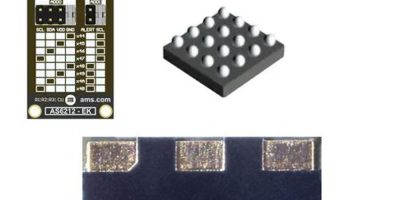The xG27 family of Bluetooth SoCs and the BB50 microcontroller are designed for the smallest IoT devices, said Silicon Labs.
The xG27 and BB50 families range in size from 2mm2 up to 5 mm2. They offer IoT device designers energy efficiency, performance and security, and in the case of the xG27 family, wireless connectivity. Both families are suitable for tiny, battery-optimised devices like connected medical devices, wearables, asset monitoring tags, smart sensors, simple consumer electronics like toothbrushes and toys.
The ICs are intended to help developers build exciting new devices while also simplifying their development processes, all while maintaining the low-power and small form-factor requirements for extremely small devices,” said Matt Johnson, CEO.
The xG27 family of SoCs comprises the BG27, for Bluetooth connectivity, and the MG27, supporting Zigbee and other proprietary protocols. Built around the Arm Cortex M33 processor, the BG27 and MG27 are supplied in wafer-level chip scale packaging, down to 2.3 x 2.6mm, suitable for compact and unobtrusive devices like medical patches, continuous glucose monitors, wearable electrocardiograms, and asset tags in retail and agriculture.
The integrated DC/DC boost allows the devices to operate on batteries as low as 0.8V and the integrated coulomb counter is for battery level monitoring to avoid battery depletion during use.
Silicon Labs’ Secure Vault with virtual security engine (VSE) ensures secure boot and debug which are hardened against glitch attacks, tamper protection. There are also features designed to protect the device and its users’ data from local and remote cyber threats, said Silicon Labs.
They also have shelf mode, which reduces energy use to less than 20 nanoA so that devices can be transported and stocked on shelves while maintaining nearly full battery life for the end-user.
The BB50 8-bit microcontrollers have a high performance core, optimised for a large number of single cycle instructions to improve operating efficiency. They also have wide operating voltage ranges and low power modes to improve energy efficiency.
They operate with Silicon Labs’ Simplicity Studio and a fully-featured 8-bit compiler.






